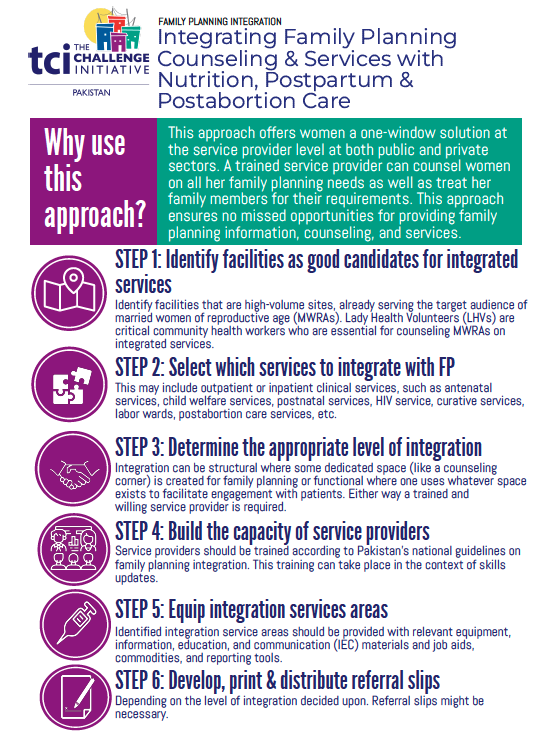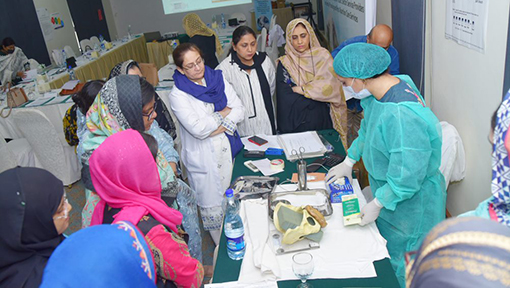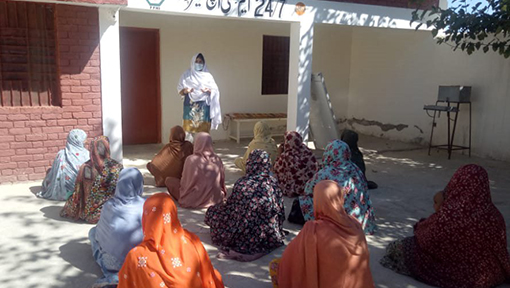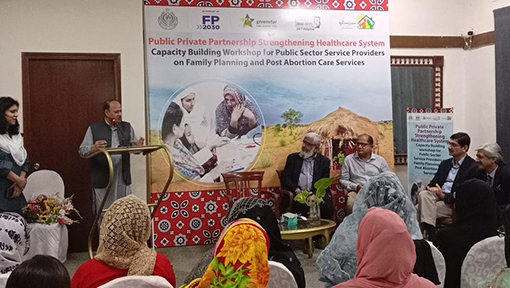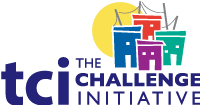Pakistan: Service Delivery
- Home
- Help and Support
- Close
- Toolkits
- Global Toolkit
- AYSRH Toolkit
- Hub Toolkits
- Core High-Impact Practices
- Gender Essentials Mini Course
- Close
- Resource Collection
- Community of Practice
- Coaching
- Log In/Register
- My Profile
- English
Family Planning Integration
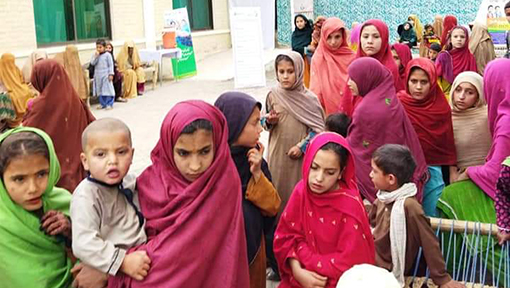 Every woman has a right to information about her health and wellbeing. Regarding family planning, counseling a married woman of reproductive age (MWRA) on the benefits of birth spacing and modern contraceptive methods and offering her family planning services from conception to delivery in an integrated approach to counseling, nutritional guidance, prenatal, antenatal and postnatal care is known as “Family Planning Integration.”
Every woman has a right to information about her health and wellbeing. Regarding family planning, counseling a married woman of reproductive age (MWRA) on the benefits of birth spacing and modern contraceptive methods and offering her family planning services from conception to delivery in an integrated approach to counseling, nutritional guidance, prenatal, antenatal and postnatal care is known as “Family Planning Integration.”
Integrating family planning counseling and services with nutrition, postpartum and postabortion care offers women a one-window solution at the service provider level at both public and private sectors. A trained service provider can counsel women on all her family planning needs as well as treat her family members for their requirements. This approach ensures no missed opportunities for providing family planning information, counseling, and services to MWRAs.
What are the benefits?
When a woman visits a service provider in Pakistan, she seeks advice and intervention on various ailments she is facing. Through a one-stop approach, women can receive multiple services at one time, addressing a wider range of health needs conveniently for clients. This approach reduces the number of frequent facility visits, which relieves women of often cited financial and logistical burdens.
Integrating services also expands the number of providers able to provide family planning counseling and services or at least referrals to family planning services, if the provider is not trained in FP. This reduces the providers’ time by focusing their attention on all the needs of the patient regardless as to the specific reason for which she came to the facility. It also can be more efficient for programs, serving more people for the same expenditures.
When a woman receives family planning counselling and services in a private, confidential and respectful manner, she is more likely to take up those services and become an advocate for family planning and birth spacing for other women.
How to implement
Step 1: Identify facilities as good candidates for integrated services
It is important to identify facilities that are high-volume sites, already serving the target audience of MWRAs. Lady Health Volunteers (LHVs) are critical community health workers who are essential for counseling MWRAs on integrated services.
As a result, map clinics in your area with LHVs, according to the set protocols for family planning services, antenatal care (ANC), delivery and labor services, postpartum and post-abortion services. Then, visit the facilities to ensure proper data management.
- Do they have client record books for all services?
- What is the client feedback like?
- What is the average daily clientele and by service?
- Are proper infection control protocols in place to provide contraceptive services?
Step 2: Select which services to integrate with family planning
Contraceptive uptake has increased in Pakistan when family planning services have been integrated with the following types of services:
Outpatient clinics
- ANC services
- Child welfare services (e.g., immunization, sick/well baby clinics/ diarrheal disease management)
- Postnatal services
- HIV services
- Self-care (i.e., breast cancer awareness, menstrual hygiene, etc.)
- Curative services
Inpatient clinical services
- Labor wards
- Postnatal/postpartum wards
- Postabortion care services
Step 3: Determine the appropriate level of integration
Integrating a trained LHV and her clinic with family health requires a prerequisite: A trained service provider with sufficient experience, accredited and updated licenses to practice and counseling skills to create awareness about family planning. First and foremost, the provider should have a favorable attitude and vigor towards behavior change communication, supporting women’s and couple’s informed choice. Since a woman’s family planning needs change over time, providing family planning integration is self-sustainable and can address multiple issues across a woman’s lifespan, across the family health continuum.
Obtain feedback from service provider(s) and potential clients as to their interest in family planning and integrating it with other health services.
Integration can be structural where some dedicated space (like a counseling corner) is created for family planning or functional where one uses whatever space exists to facilitate engagement with patients.
How Does Integration Look? A Range of Options
COUNSELING AND METHOD PROVISION
Providers can be trained to offer family planning counseling and provision of methods in addition to the service(s) they already provide (e.g., immunization).
COUNSELING ONLY
Providers offering other services can be trained to counsel women on family planning but refer interested clients to a family planning clinic for method provision.
SCREENING ONLY
Providers could identify women with unmet need for family planning (e.g., through a screening tool) and refer them to the family planning clinic for both counseling and method provision.
Step 4: Build the capacity of service providers
Service providers should be trained according to the country’s national guidelines on family planning integration, usually developed by the Ministry of Health. In many countries, specific guidelines exist for integrating family planning into HIV services and into maternal and child health services such as postpartum care and immunization services.
You can also train providers on integrated services in the context of skills updates. For example, if there is refresher training for providers every year, you can incorporate a module on family planning integration.
Examples of Training Materials
- Guidelines on Birth Spacing and Family Planning for Midwives in Pakistan (Urdu)
- Standardized Training Package on Family Planning, WHO 2020 (Urdu) (English)
- Guidebook for Trainers on Healthy Timing and Spacing of Pregnancies (Urdu)
- Standardized Training Manual of Family Planning for CHWs, WHO 2020 (Urdu)
- Providing Post Pregnancy Family Planning Clinical Services, UNFPA & Jhpiego 2021 (English)
- Post Partum Family Planning Contraceptive Technology Update: Trainer’s Manual, Jhpiego 2012: Strengthening Post Partum Family Planning in Punjab (English)
- Post Abortion Family Planning Trainee Manual, Marie Stopes Society 2013 (English)
Step 5: Equip integration service areas
Identified integration service areas should be provided with relevant equipment, stationary, information, education, and communication (IEC) materials and job aids, commodities, and reporting tools. For example, providers working in the postpartum ward may need IEC materials on immediate postpartum IUD provision.
Step 6: Develop, print and distribute referral slips, as necessary
Using a social mobilization approach with lady health volunteers is a proven strategy to support family health centers/clinics (FHCs) in integrating family planning counseling and services into other health services. CHWs can create strong linkages between FHCs and community by providing referral slips and tokens for discounted services. This can also help program teams to access data and monitor progress of the interventions.
Indicators for success
- Increase in clientele
- Increase in revenue
- Number of MWRAs reached/counseled
- Number of MWRAs registered
- Number of tokens generated/referrals provided
- Number of tokens redeemed/referrals completed
- Number of short-term contraceptives (condoms, pills and injectables) purchased
- Number of IUCDs inserted (long-term contraceptive)
Resources needed
- Infrastructure (material to upgrade clinics)
- Printing costs for IEC material, brochures, client record books, client registration, and referral books
- Venue for trainings
- Logistics (transport, per diems, lunch)
- Accommodation (depends on the number of training days)
What Is the Evidence?
Greenstar Social Marketing has recently upgraded 79 clinics to Family Health Centers under the Integrated Family Planning Approach. The clinics were selected based on their infrastructure, sales/number of clients services and service delivery offerings. We upgraded the clinical facilities, commodities and marketing strategy of these clinics. Initial data after these upgrades have been in place suggests an increase in client uptake, service deliveries and revenue. Along with that, the intervention boosted morale of service providers and accountability towards the landscape.
TCI APP USERS PLEASE NOTE
You will only receive CERTIFICATES by email – when earning a score above 80% – and will not be able to view or print a certifcate PDF from the TCI app.
Test Your Knowledge
Earn a Certificate
Quiz Summary
0 of 4 Questions completed
Questions:
Information
You have already completed the quiz before. Hence you can not start it again.
Quiz is loading…
You must sign in or sign up to start the quiz.
You must first complete the following:
Results
Results
0 of 4 Questions answered correctly
Your time:
Time has elapsed
You have reached 0 of 0 point(s), (0)
Earned Point(s): 0 of 0, (0)
0 Essay(s) Pending (Possible Point(s): 0)
Categories
- Not categorized 0%
- 1
- 2
- 3
- 4
- Current
- Review
- Answered
- Correct
- Incorrect
-
Question 1 of 4
1. Question
Is this approach referring to the integration of family planning into:
CorrectIncorrect -
Question 2 of 4
2. Question
What type of services can be integrated with family planning?
CorrectIncorrect -
Question 3 of 4
3. Question
Service providers don’t need training in family planning to provided integrated family planning services.
CorrectIncorrect -
Question 4 of 4
4. Question
Integrated services may help women hindered by social norms to access family planning services.
CorrectIncorrect
Pakistan Service Delivery Interventions
Tips
- Engage providers preemptively as the clinics phase out from a maternity home to a family health center/clinic
- Motivate providers towards self-sustainability and upgrading their skills
Challenges
- Lack of space or infrastructure may impact ability to ensure privacy for clients and/or make it feasible to add family planning services
- Additional initial costs are likely to be associated with integration (for example, the need for extra staff, training, IEC materials and reporting tools)
- Providers may experience increased workloads
- Clients may experience increased waiting times due to longer, more comprehensive visits
- Counselors without clinical training may be intimidated to discuss contraceptive methods and how they work


